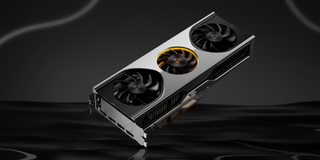Chinese GPU maker reveals new workstation GPU for the domestic market — Moore Threads MTT X300 uses the same hardware as the gaming-focused MTT S80
Pro version of the S80.

Chinese GPU designer Moore Threads has developed the MTT X300, a new graphics card for workstations. Under the company’s professional vision accelerator label, the X300 supports x86, Arm, and LoongArch CPUs. Moore Threads says the GPU works in Windows, Ubuntu, and Chinese OSes like Fangde and Tongxin.
On the hardware side, the X300 is a PCIe 5.0 card with 4,096 second-generation MUSA cores, 16GB of GDDR6 memory, and a 256-bit wide memory bus capable of hitting 448 GB/s of bandwidth. The X300 also has 8K video output, AV1 encoding and decoding, and support for common graphics APIs such as OpenGL, DirectX, and Vulkan.
However, this isn’t anything new for Moore Threads, as these specifications are identical to those of the MTT S80, launched over two years ago. The official spec sheets for both cards are nearly the same, with the only difference being that Moore Threads doesn’t specify the clock speed for the X300. Both cards are the same size, meaning they likely share the same cooler.
While there are seemingly no differences between the X300 and S80 concerning hardware, drivers are probably different. It’s pretty standard for Nvidia and AMD to use the same hardware for gaming and workstation GPUs (though not quite to this degree), but only owners of workstation cards get access to professional-grade drivers. These drivers, such as Nvidia's Studio drivers, come with specific optimizations for applications that aren’t games, like AutoCAD.
Moore Threads doesn’t explicitly say that the X300 has workstation-optimized drivers but does advertise that the card supports apps like Unreal Engine, Unity, and AutoCAD. Unfortunately, those drivers aren’t yet available on Moore Threads’ website, so we can’t know. At the very least, the X300 would be a pointless product if it didn’t have any special drivers since it would otherwise be identical to the S80.
How the X300 performs in workstation workloads is an open question. In games, even the Ryzen 5 8600G, with its integrated graphics, easily surpasses the S80, so the X300’s raw horsepower probably isn’t all that promising. It does have lots of decently fast memory, though, which could be a big selling point.
Moore Threads has also struggled with fully optimizing its GPU drivers, and just in October, it released new drivers that improved performance in two games by 30 to 40%. These sorts of driver updates are pretty typical for Moore Threads, indicating that lots of performance is potentially being left on the table, and that could be the case for professional applications.
Stay On the Cutting Edge: Get the Tom's Hardware Newsletter
Get Tom's Hardware's best news and in-depth reviews, straight to your inbox.
Matthew Connatser is a freelancing writer for Tom's Hardware US. He writes articles about CPUs, GPUs, SSDs, and computers in general.
-
bit_user Reply
Not entirely pointless. For one thing, workstation cards tend to have much better warranties (but also reduced clocks & power requirements). Another differentiator is that they tend to have PCIe power connectors on the short edge, so you can fit them in a 3U case and fit neatly into one or two slot widths, so you can pack multiple of them in like sardines.The article said:At the very least, the X300 would be a pointless product if it didn’t have any special drivers since it would otherwise be identical to the S80.
Finally, and perhaps most importantly, software vendors will validate their software on workstation GPUs. If you have a problem with their software and you're not using a supported hardware configuration, the first (and probably only thing) their customer support reps will tell you is that you should be using supported hardware. For a (usually smaller) software vendor, they don't want to test every possible hardware configuration under the sun, and they also don't want to troubleshoot a malfunction that turns out to be some flaky computations on a gaming GPU that's heavily overclocked or whatever.
Most Popular





